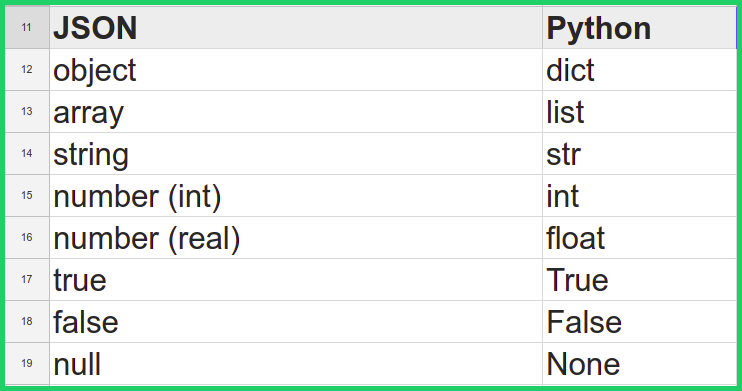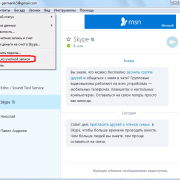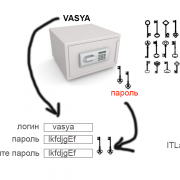Json в python
Содержание:
- Command Line Interface¶
- Packaging
- Encoders and Decoders¶
- 표준 준수와 상호 운용성¶
- Cheat Code
- Deserializing Simple Built-in Datatypes
- Working with Custom Objects
- Testing
- Десериализация JSON
- Encodeurs et décodeurs¶
- Сохранение данных в файл Pickle.
- Python поддерживает JSON
- Сохранение данных в JSON
- 19.2.2. Encoders and Decoders¶
- Array¶
- Разбор JSON с использованием пользовательского класса
- Основы
- Implement a custom JSON decoder using json.load()
- Command Line Interface¶
- 명령 줄 인터페이스¶
- Сохранение данных в файл JSON
Command Line Interface¶
The module provides a simple command line interface to
validate and pretty-print JSON.
If the optional and arguments are not
specified, and will be used respectively:
$ echo '{"json": "obj"}' | python -m simplejson.tool
{
"json": "obj"
}
$ echo '{1.2:3.4}' | python -m simplejson.tool
Expecting property name enclosed in double quotes: line 1 column 2 (char 1)
Command line options
-
The JSON file to be validated or pretty-printed:
$ python -m simplejson.tool mp_films.json { "title": "And Now for Something Completely Different", "year": 1971 }, { "title": "Monty Python and the Holy Grail", "year": 1975 }If infile is not specified, read from .
-
Write the output of the infile to the given outfile. Otherwise, write it
to .
Footnotes
| As noted in the errata for RFC 7159, JSON permits literal U+2028 (LINE SEPARATOR) and U+2029 (PARAGRAPH SEPARATOR) characters in strings, whereas JavaScript (as of ECMAScript Edition 5.1) does not. |
Packaging
rustup default nightly pip wheel --no-binary=orjson orjson
This is an example of building a wheel using the repository as source,
installed from upstream, and a pinned version of Rust:
pip install maturin curl https://sh.rustup.rs -sSf | sh -s -- --default-toolchain nightly-2020-10-24 --profile minimal -y maturin build --no-sdist --release --strip --manylinux off ls -1 target/wheels
Problems with the Rust nightly channel may require pinning a version.
is known to be ok.
orjson is tested for amd64 and aarch64 on Linux, macOS, and Windows. It
may not work on 32-bit targets. It should be compiled with
on amd64 and on arm7. musl
libc is not supported, but building with
will probably work. The recommended flags are specified in
and will apply unless is set.
There are no runtime dependencies other than libc.
orjson’s tests are included in the source distribution on PyPI. It is
necessarily to install dependencies from PyPI specified in
. These require a C compiler. The tests do not
make network requests.
The tests should be run as part of the build. It can be run like this:
pip install -r test/requirements.txt pytest -q test
Encoders and Decoders¶
- class (*, object_hook=None, parse_float=None, parse_int=None, parse_constant=None, strict=True, object_pairs_hook=None)
-
Simple JSON decoder.
Performs the following translations in decoding by default:
JSON
Python
object
dict
array
list
string
str
number (int)
int
number (real)
float
true
True
false
False
null
None
It also understands , , and as their
corresponding values, which is outside the JSON spec.object_hook, if specified, will be called with the result of every JSON
object decoded and its return value will be used in place of the given
. This can be used to provide custom deserializations (e.g. to
support JSON-RPC class hinting).object_pairs_hook, if specified will be called with the result of every
JSON object decoded with an ordered list of pairs. The return value of
object_pairs_hook will be used instead of the . This
feature can be used to implement custom decoders. If object_hook is also
defined, the object_pairs_hook takes priority.Changed in version 3.1: Added support for object_pairs_hook.
parse_float, if specified, will be called with the string of every JSON
float to be decoded. By default, this is equivalent to .
This can be used to use another datatype or parser for JSON floats
(e.g. ).parse_int, if specified, will be called with the string of every JSON int
to be decoded. By default, this is equivalent to . This can
be used to use another datatype or parser for JSON integers
(e.g. ).parse_constant, if specified, will be called with one of the following
strings: , , .
This can be used to raise an exception if invalid JSON numbers
are encountered.If strict is false ( is the default), then control characters
will be allowed inside strings. Control characters in this context are
those with character codes in the 0–31 range, including (tab),
, and .If the data being deserialized is not a valid JSON document, a
will be raised.Changed in version 3.6: All parameters are now .
- (s)
-
Return the Python representation of s (a instance
containing a JSON document).will be raised if the given JSON document is not
valid.
- (s)
-
Decode a JSON document from s (a beginning with a
JSON document) and return a 2-tuple of the Python representation
and the index in s where the document ended.This can be used to decode a JSON document from a string that may have
extraneous data at the end.
표준 준수와 상호 운용성¶
JSON 형식은 RFC 7159와 ECMA-404에 의해 지정됩니다. 이 절에서는 이 모듈의 RFC 준수 수준에 대해 자세히 설명합니다. 단순화를 위해, 및 서브 클래스와 명시적으로 언급되지 않은 매개 변수는 고려되지 않습니다.
유효한 JavaScript이지만 유효한 JSON이 아닌 확장을 구현함으로써, 이 모듈은 엄격한 방식으로 RFC를 준수하지는 않습니다. 특히:
-
무한대와 NaN 숫자 값이 받아들여지고 출력됩니다;
-
오브젝트 내에서 반복되는 이름이 허용되고, 마지막 이름-값 쌍의 값만 사용됩니다.
RFC가 RFC를 준수하는 구문 분석기가 RFC를 준수하지 않는 입력 텍스트를 받아들이도록 허용하기 때문에, 이 모듈의 역 직렬화기는 기본 설정에서 기술적으로 RFC를 준수합니다.
문자 인코딩
RFC는 UTF-8, UTF-16 또는 UTF-32를 사용하여 JSON을 표현할 것을 요구하고, 최대 상호 운용성을 위해 권장되는 기본값은 UTF-8입니다.
RFC에 의해 요구되는 것은 아니지만 허용되기 때문에, 이 모듈의 직렬화기는 기본적으로 ensure_ascii=True를 설정하므로, 결과 문자열에 ASCII 문자만 포함되도록 출력을 이스케이핑 합니다.
ensure_ascii 매개 변수 외에도, 이 모듈은 파이썬 객체와 사이의 변환으로 엄격하게 정의되어 있으므로, 문자 인코딩 문제를 직접 다루지 않습니다.
RFC는 JSON 텍스트의 시작 부분에 바이트 순서 표시(BOM)를 추가하는 것을 금지하고 있으며, 이 모듈의 직렬화기는 BOM을 출력에 추가하지 않습니다. RFC는 JSON 역 직렬화기가 입력에서 초기 BOM을 무시하는 것을 허용하지만 요구하지는 않습니다. 이 모듈의 역 직렬화기는 초기 BOM이 있을 때 를 발생시킵니다.
RFC는 유효한 유니코드 문자에 해당하지 않는 바이트 시퀀스(예를 들어, 쌍을 이루지 않은 UTF-16 대리 코드(unpaired UTF-16 surrogates))가 포함된 JSON 문자열을 명시적으로 금지하지 않지만, 상호 운용성 문제를 일으킬 수 있다고 지적하고 있습니다. 기본적으로, 이 모듈은 이러한 시퀀스의 코드 포인트를 받아들이고 (원래 에 있을 때) 출력합니다.
무한대와 NaN 숫자 값
RFC는 무한대나 NaN 숫자 값의 표현을 허용하지 않습니다. 그런데도, 기본적으로, 이 모듈은 유효한 JSON 숫자 리터럴 값인 것처럼 , 및 을 받아들이고 출력합니다:
>>> # Neither of these calls raises an exception, but the results are not valid JSON
>>> json.dumps(float('-inf'))
'-Infinity'
>>> json.dumps(float('nan'))
'NaN'
>>> # Same when deserializing
>>> json.loads('-Infinity')
-inf
>>> json.loads('NaN')
nan
직렬화기에서, allow_nan 매개 변수를 사용하여 이 동작을 변경할 수 있습니다. 역 직렬화기에서, parse_constant 매개 변수를 사용하여 이 동작을 변경할 수 있습니다.
오브젝트 내에서 반복된 이름
RFC는 JSON 오브젝트 내에서 이름이 고유해야 한다고 지정하지만, JSON 오브젝트 내에서 반복되는 이름을 처리하는 방법을 지정하지는 않습니다. 기본적으로, 이 모듈은 예외를 발생시키지 않습니다; 대신, 주어진 이름에 대한 마지막 이름-값 쌍을 제외한 모든 것을 무시합니다:
>>> weird_json = '{"x": 1, "x": 2, "x": 3}'
>>> json.loads(weird_json)
{'x': 3}
object_pairs_hook 매개 변수는 이 동작을 변경하는 데 사용할 수 있습니다.
오브젝트나 배열이 아닌 최상윗값
폐지된 RFC 4627에 의해 지정된 이전 버전의 JSON은 JSON 텍스트의 최상윗값이 JSON 오브젝트나 배열(파이썬 나 )이어야 하고, JSON null, 불리언, 숫자 또는 문자열 값이 될 수 없다고 요구합니다. RFC 7159는 그 제한을 제거했으며, 이 모듈은 직렬화기와 역 직렬화기에서 이러한 제한을 구현하지 않으며, 그런 적도 없습니다.
이와 관계없이, 최대한의 상호 운용성을 위해, 여러분은 자발적으로 제한을 준수하기를 원할 수 있습니다.
Cheat Code
|
json.dumps(person_data) |
Create JSON Object |
|
json.dump(person_data, file_write) |
Create JSON File using File I/O of Python |
|
compact_obj = json.dumps(data, separators=(‘,’,’:’)) |
Compact JSON Object by removing space character from JSON Object using separator |
|
formatted_obj = json.dumps(dic, indent=4, separators=(‘,’, ‘: ‘)) |
Formatting JSON code using Indent |
|
sorted_string = json.dumps(x, indent=4, sort_keys=True) |
Sorting JSON object key by alphabetic order |
|
complex_obj = json.dumps(4 + 5j, default=complex_encode) |
Python Complex Object encoding in JSON |
|
JSONEncoder().encode(colour_dict) |
Use of JSONEncoder Class for Serialization |
|
json.loads(data_string) |
Decoding JSON String in Python dictionary using json.loads() function |
|
json.loads(‘{«__complex__»: true, «real»: 4, «img»: 5}’, object_hook = is_complex) |
Decoding of complex JSON object to Python |
|
JSONDecoder().decode(colour_string) |
Use of Decoding JSON to Python with Deserialization |
Deserializing Simple Built-in Datatypes
As in the case of serialization, the decoder converts JSON encoded data into native Python data types as in the table below:

JSON — Python conversion
The module exposes two other methods for deserialization.
- — to deserialize a JSON document to a Python object.
- — to deserialize a JSON formatted stream ( which supports reading from a file) to a Python object.
>>> import json>>> json.loads('{ "active": true, "age": 78, "balance": 345.8, "friends": , "name": "Foo Bar", "other_names": ,"spouse":null}')
And the output:
{'active': True, 'age': 78, 'balance': 345.8, 'friends': , 'name': 'Foo Bar', 'other_names': , 'spouse': None}
Here we passed a JSON string to the method, and got a dictionary as the output.To demonstrate how works, we could read from the file that we created during serialization in the previous section.
>>> import json>>> with open('user.json', 'r') as file: user_data = json.load(file)>>> print(user_data)
From this example, we get a dictionary, again, similar to the one in above.
Working with Custom Objects
So far we’ve only worked with built-in data types. However, in real world applications, we often need to deal with custom objects. We will look at how to go about serializing and deserializing custom objects.
Testing
The library has comprehensive tests. There are tests against fixtures in the
JSONTestSuite and
nativejson-benchmark
repositories. It is tested to not crash against the
Big List of Naughty Strings.
It is tested to not leak memory. It is tested to not crash
against and not accept invalid UTF-8. There are integration tests
exercising the library’s use in web servers (gunicorn using multiprocess/forked
workers) and when
multithreaded. It also uses some tests from the ultrajson library.
orjson is the most correct of the compared libraries. This graph shows how each
library handles a combined 342 JSON fixtures from the
JSONTestSuite and
nativejson-benchmark tests:
| Library | Invalid JSON documents not rejected | Valid JSON documents not deserialized |
|---|---|---|
| orjson | ||
| ujson | 38 | |
| rapidjson | 6 | |
| simplejson | 13 | |
| json | 17 |
This shows that all libraries deserialize valid JSON but only orjson
correctly rejects the given invalid JSON fixtures. Errors are largely due to
accepting invalid strings and numbers.
The graph above can be reproduced using the script.
Десериализация JSON
Отлично, похоже вам удалось поймать экземпляр дикого JSON! Теперь нам нужно предать ему форму. В модуле json вы найдете load() и loads() для превращения кодированных данных JSON в объекты Python.
Как и сериализация, есть простая таблица конверсии для десериализации, так что вы можете иметь представление о том, как все выглядит.
| JSON | Python |
| object | dict |
| array | list |
| string | str |
| number (int) | int |
| number (real) | float |
| true | True |
| false | False |
| null | None |
Технически, эта конверсия не является идеальной инверсией таблицы сериализации. По сути, это значит что если вы кодируете объект сейчас, а затем декодируете его в будущем, вы можете не получить тот же объект назад. Я представляю это как своего рода телепортацию: мои молекулы распадаются в точке А и собираются в точке Б. Буду ли я тем же самым человеком?
В реальности, это как попросить одного друга перевести что-нибудь на японский, а потом попросить другого друга перевести это обратно на русский. В любом случае, самым простым примером будет кодировать кортеж и получить назад список после декодирования, вот так:
Python
blackjack_hand = (8, «Q»)
encoded_hand = json.dumps(blackjack_hand)
decoded_hand = json.loads(encoded_hand)
print(blackjack_hand == decoded_hand) # False
print(type(blackjack_hand)) # <class ‘tuple’>
print(type(decoded_hand)) # <class ‘list’>
print(blackjack_hand == tuple(decoded_hand)) # True
|
1 |
blackjack_hand=(8,»Q») encoded_hand=json.dumps(blackjack_hand) decoded_hand=json.loads(encoded_hand) print(blackjack_hand==decoded_hand)# False print(type(blackjack_hand))# <class ‘tuple’> print(type(decoded_hand))# <class ‘list’> print(blackjack_hand==tuple(decoded_hand))# True |
Encodeurs et décodeurs¶
- class (*, object_hook=None, parse_float=None, parse_int=None, parse_constant=None, strict=True, object_pairs_hook=None)
-
Décodeur simple JSON.
Applique par défaut les conversions suivantes en décodant :
JSON
Python
objet
dict
array
list
string
str
number (nombre entier)
int
number (nombre réel)
float
true
True
false
False
null
Les valeurs , et sont aussi comprises comme leurs valeurs correspondantes, bien que ne faisant pas partie de la spécification JSON.
Si object_hook est définie, elle sera appelée avec le résultat de chaque objet JSON décodé et sa valeur de retour est utilisée à la place du donné. Cela est utile pour apporter des déserialisations personnalisées (p. ex. pour supporter les class hinting de JSON-RPC).
Si object_pairs_hook est donnée, elle sera appelée avec le résultat de chaque objet JSON décodé avec une liste ordonnée de couples. Sa valeur de retour est utilisée à la place du . Cette fonctionnalité peut être utilisée pour implémenter des décodeurs personnalisés. object_pairs_hook prend la priorité sur object_hook, si cette dernière est aussi définie.
Modifié dans la version 3.1: ajout du support de object_pairs_hook.
Si parse_float est définie, elle est appelée avec chaque nombre réel JSON à décoder, sous forme d’une chaîne de caractères, en argument. Par défaut, elle est équivalente à . Cela peut servir à utiliser un autre type de données ou un autre analyseur pour les nombres réels JSON (p. ex. ).
Si parse_int est définie, elle est appelée avec chaque nombre entier JSON à décoder, sous forme d’une chaîne de caractères, en argument. Par défaut, elle est équivalente à . Cela peut servir à utiliser un autre type de données ou un autre analyseur pour les nombres entiers JSON (p. ex. ).
Si parse_constant est définie, elle est quand l’une des chaînes de caractères suivantes est rencontrée : , ou . Cela peut servir à lever une exception si des nombres JSON invalides sont rencontrés.
Si strict vaut ( par défaut), alors les caractères de contrôle sont autorisés à l’intérieur des chaînes. Les caractères de contrôle dans ce contexte sont ceux dont les codes sont dans l’intervalle 0—31, incluant (tabulation), , et .
Si les données à désérialiser ne sont pas un document JSON valide, une est levée.
Modifié dans la version 3.6: Tous les paramètres sont maintenant des .
- (s)
-
Renvoie la représentation Python de s (une instance contenant un document JSON).
Une est levée si le document JSON donné n’est pas valide.
- (s)
-
Décode en document JSON depuis s (une instance débutant par un document JSON) et renvoie un n-uplet de 2 éléments contenant la représentation Python de l’objet et l’index dans s où le document se terminait.
Elle peut être utilisée pour décoder un document JSON depuis une chaîne qui peut contenir des données supplémentaires à la fin.
Сохранение данных в файл Pickle.
Модуль Pickle работает со структурами данных. Давайте создадим одну.
>>> shell 1 ①>>> entry = {} ②>>> entry’title’ = ‘Dive into history, 2009 edition’>>> entry’article_link’ = ‘http://diveintomark.org/archives/2009/03/27/dive-into-history-2009-edition’>>> entry’comments_link’ = None>>> entry’internal_id’ = b’\xDE\xD5\xB4\xF8′>>> entry’tags’ = (‘diveintopython’, ‘docbook’, ‘html’)>>> entry’published’ = True>>> import time>>> entry’published_date’ = time.strptime(‘Fri Mar 27 22:20:42 2009′) ③>>> entry’published_date’ time.struct_time(tm_year=2009, tm_mon=3, tm_mday=27, tm_hour=22, tm_min=20, tm_sec=42, tm_wday=4, tm_yday=86, tm_isdst=-1)
① Все дальнейшее происходит в консоли Python #1.
② Идея в том чтобы создать словарь, который будет представлять что-нибудь полезное, например элемент рассылки Atom. Также я хочу быть уверенным, что он содержит несколько разных типов данных, чтобы раскрыть возможности модуля pickle. Не вчитывайтесь слишком сильно в эти переменные.
③ Модуль time содержит структуру данных (struct_time) для представления момента времени (вплоть до миллисекунд) и функции для работы с этими структурами. Функция strptime() принимает на вход форматированную строку и преобразует ее в struct_time. Эта строка в стандартном формате, но вы можете контролировать ее при помощи кодов форматирования. Для более подробного описания загляните в модуль time.
Теперь у нас есть замечательный словарь. Давайте сохраним его в файл.
>>> shell ①1>>> import pickle>>> with open(‘entry.pickle’, ‘wb’) as f: ②
… pickle.dump(entry, f) ③
…
① Мы все еще в первой консоли
② Используйте функцию open() для того чтобы открыть файл. Установим режим работы с файлом в ‘wb’ для того чтобы открыть файл для записи в двоичном режиме. Обернем его в конструкцию with для того чтобы быть уверенным в том что файл закроется автоматически, когда вы завершите работу с ним.
③ Функция dump() модуля pickle принимает сериализуемую структуру данных Python, сериализует ее в двоичный, Python-зависимый формат использует последнюю версию протокола pickle и сохраняет ее в открытый файл.
Последнее предложение было очень важным.
- Протокол pickle зависит от Python; здесь нет гарантий совместимости с другими языками. Вы возможно не сможете взять entry.pickle файл, который только что сделали и как — либо с пользой его использовать при помощи Perl, PHP, Java или любого другого языка программирования
- Не всякая структура данных Python может быть сериализована модулем Pickle. Протокол pickle менялся несколько раз с добавлением новых типов данных в язык Python, и все еще у него есть ограничения.
- Как результат, нет гарантии совместимости между разными версиями Python. Новые версии Python поддерживают старые форматы сериализации, но старые версии Python не поддерживают новые форматы (поскольку не поддерживают новые форматы данных)
- Пока вы не укажете иное, функции модуля pickle будут использовать последнюю версию протокола pickle. Это сделано для уверенности в том, что вы имеете наибольшую гибкость в типах данных, которые вы можете сериализовать, но это также значит, что результирующий файл будет невозможно прочитать при помощи старых версий Python, которые не поддерживают последнюю версию протокола pickle.
- Последняя версия протокола pickle это двоичный формат. Убедитесь, что открываете файлы pickle в двоичном режиме, или данные будут повреждены при записи.
Python поддерживает JSON
Python содержит встроенный модуль под названием json для кодирования и декодирования данных JSON.
Просто импортируйте модуль в начале вашего файла:
Python
import json
| 1 | importjson |
Небольшой словарь
Как правило, процесс кодирования JSON называется сериализация. Этот термин обозначает трансформацию данных в серию байтов (следовательно, серийных) для хранения или передачи по сети. Также вы, возможно, уже слышали о термине «маршалинг», но это уже совсем другая область.
Естественно, десериализация — является противоположным процессом декодирования данных, которые хранятся или направлены в стандарт JSON.
Сохранение данных в JSON
Чтобы записать информацию в формате JSON с помощью средств языка Python, нужно прежде всего подключить модуль json, воспользовавшись командой import json в начале файла с кодом программы. Метод dumps отвечает за автоматическую упаковку данных в JSON, принимая при этом переменную, которая содержит всю необходимую информацию. В следующем примере демонстрируется кодирование словаря под названием dictData. В нем имеются некие сведения о пользователе интернет-портала, такие как идентификационный код, логин, пароль, полное имя, номер телефона, адрес электронной почты и данные об активности. Эти значения представлены в виде обычных строк, а также целых чисел и булевых литералов True/False.
import json
dictData = { "ID" : 210450,
"login" : "admin",
"name" : "John Smith",
"password" : "root",
"phone" : 5550505,
"email" : "smith@mail.com",
"online" : True }
jsonData = json.dumps(dictData)
print(jsonData)
{"ID": 210450, "login": "admin", "name": "John Smith", "password": "root", "phone": 5550505, "email": "smith@mail.com", "online": true}
Результат выполнения метода dumps передается в переменную под названием jsonData. Таким образом, словарь dictData был преобразован в JSON-формат всего одной строчкой. Как можно увидеть, благодаря функции print, все сведения были закодированы в своем изначальном виде. Стоит заметить, что данные из поля online были преобразованы из литерала True в true.
С помощью Python сделаем запись json в файл. Для этого дополним код предыдущего примера следующим образом:
with open("data.json", "w") as file:
file.write(jsonData)
Подробнее про запись данных в текстовые файлы описано в отдельной статье на нашем сайте.
19.2.2. Encoders and Decoders¶
- class (object_hook=None, parse_float=None, parse_int=None, parse_constant=None, strict=True, object_pairs_hook=None)
-
Simple JSON decoder.
Performs the following translations in decoding by default:
JSON Python object dict array list string str number (int) int number (real) float true True false False null None It also understands , , and as their
corresponding values, which is outside the JSON spec.object_hook, if specified, will be called with the result of every JSON
object decoded and its return value will be used in place of the given
. This can be used to provide custom deserializations (e.g. to
support JSON-RPC class hinting).object_pairs_hook, if specified will be called with the result of every
JSON object decoded with an ordered list of pairs. The return value of
object_pairs_hook will be used instead of the . This
feature can be used to implement custom decoders that rely on the order
that the key and value pairs are decoded (for example,
will remember the order of insertion). If
object_hook is also defined, the object_pairs_hook takes priority.Changed in version 3.1: Added support for object_pairs_hook.
parse_float, if specified, will be called with the string of every JSON
float to be decoded. By default, this is equivalent to .
This can be used to use another datatype or parser for JSON floats
(e.g. ).parse_int, if specified, will be called with the string of every JSON int
to be decoded. By default, this is equivalent to . This can
be used to use another datatype or parser for JSON integers
(e.g. ).parse_constant, if specified, will be called with one of the following
strings: , , .
This can be used to raise an exception if invalid JSON numbers
are encountered.If strict is false ( is the default), then control characters
will be allowed inside strings. Control characters in this context are
those with character codes in the 0–31 range, including (tab),
, and .If the data being deserialized is not a valid JSON document, a
will be raised.- (s)
-
Return the Python representation of s (a instance
containing a JSON document).will be raised if the given JSON document is not
valid.
- (s)
-
Decode a JSON document from s (a beginning with a
JSON document) and return a 2-tuple of the Python representation
and the index in s where the document ended.This can be used to decode a JSON document from a string that may have
extraneous data at the end.
Array¶
A JSON array is an ordered collection of other JSON values.
- *json_array(void)
-
Return value: New reference.
Returns a new JSON array, or NULL on error. Initially, the array
is empty.
- size_t json_array_size(const *array)
-
Returns the number of elements in array, or 0 if array is NULL
or not a JSON array.
- *json_array_get(const *array, size_t index)
-
Return value: Borrowed reference.
Returns the element in array at position index. The valid range
for index is from 0 to the return value of
minus 1. If array is not a JSON array,
if array is NULL, or if index is out of range, NULL is
returned.
- int json_array_set( *array, size_t index, *value)
-
Replaces the element in array at position index with value.
The valid range for index is from 0 to the return value of
minus 1. Returns 0 on success and -1 on
error.
- int json_array_set_new( *array, size_t index, *value)
-
Like but steals the reference to value.
This is useful when value is newly created and not used after
the call.
- int json_array_append( *array, *value)
-
Appends value to the end of array, growing the size of array
by 1. Returns 0 on success and -1 on error.
- int json_array_append_new( *array, *value)
-
Like but steals the reference to
value. This is useful when value is newly created and not used
after the call.
- int json_array_insert( *array, size_t index, *value)
-
Inserts value to array at position index, shifting the
elements at index and after it one position towards the end of
the array. Returns 0 on success and -1 on error.
- int json_array_insert_new( *array, size_t index, *value)
-
Like but steals the reference to
value. This is useful when value is newly created and not used
after the call.
- int json_array_remove( *array, size_t index)
-
Removes the element in array at position index, shifting the
elements after index one position towards the start of the array.
Returns 0 on success and -1 on error. The reference count of the
removed value is decremented.
- int json_array_clear( *array)
-
Removes all elements from array. Returns 0 on sucess and -1 on
error. The reference count of all removed values are decremented.
Разбор JSON с использованием пользовательского класса
По умолчанию объект JSON анализируется в питоне ДИКТ. Иногда вам может понадобиться автоматически создать объект вашего собственного класса из данных JSON. Вы можете сделать это, указав object_hook функция, которая обрабатывает преобразование. В следующем примере показано, как.
Вот пользовательский класс, представляющий Человек.
Экземпляр этого класса создается путем передачи необходимых аргументов следующим образом:
Чтобы использовать этот класс для создания экземпляров при разборе JSON, вам нужен object_hook функция определяется следующим образом: функция получает питона ДИКТ и возвращает объект правильного класса.
Теперь вы можете использовать это object_hook функция при вызове анализатора JSON.
Основы
json.dump(obj, fp, skipkeys=False, ensure_ascii=True, check_circular=True, allow_nan=True, cls=None, indent=None, separators=None, default=None, sort_keys=False, **kw) — сериализует obj как форматированный JSON поток в fp.
Если skipkeys = True, то ключи словаря не базового типа (str, unicode, int, long, float, bool, None) будут проигнорированы, вместо того, чтобы вызывать исключение TypeError.
Если ensure_ascii = True, все не-ASCII символы в выводе будут экранированы последовательностями \uXXXX, и результатом будет строка, содержащая только ASCII символы. Если ensure_ascii = False, строки запишутся как есть.
Если check_circular = False, то проверка циклических ссылок будет пропущена, а такие ссылки будут вызывать OverflowError.
Если allow_nan = False, при попытке сериализовать значение с запятой, выходящее за допустимые пределы, будет вызываться ValueError (nan, inf, -inf) в строгом соответствии со спецификацией JSON, вместо того, чтобы использовать эквиваленты из JavaScript (NaN, Infinity, -Infinity).
Если indent является неотрицательным числом, то массивы и объекты в JSON будут выводиться с этим уровнем отступа. Если уровень отступа 0, отрицательный или «», то вместо этого будут просто использоваться новые строки. Значение по умолчанию None отражает наиболее компактное представление. Если indent — строка, то она и будет использоваться в качестве отступа.
Если sort_keys = True, то ключи выводимого словаря будут отсортированы.
json.dumps(obj, skipkeys=False, ensure_ascii=True, check_circular=True, allow_nan=True, cls=None, indent=None, separators=None, default=None, sort_keys=False, **kw) — сериализует obj в строку JSON-формата.
Аргументы имеют то же значение, что и для dump().
Ключи в парах ключ/значение в JSON всегда являются строками. Когда словарь конвертируется в JSON, все ключи словаря преобразовываются в строки. В результате этого, если словарь сначала преобразовать в JSON, а потом обратно в словарь, то можно не получить словарь, идентичный исходному. Другими словами, loads(dumps(x)) != x, если x имеет нестроковые ключи.
json.load(fp, cls=None, object_hook=None, parse_float=None, parse_int=None, parse_constant=None, object_pairs_hook=None, **kw) — десериализует JSON из fp.
object_hook — опциональная функция, которая применяется к результату декодирования объекта (dict). Использоваться будет значение, возвращаемое этой функцией, а не полученный словарь.
object_pairs_hook — опциональная функция, которая применяется к результату декодирования объекта с определённой последовательностью пар ключ/значение. Будет использован результат, возвращаемый функцией, вместо исходного словаря. Если задан так же object_hook, то приоритет отдаётся object_pairs_hook.
parse_float, если определён, будет вызван для каждого значения JSON с плавающей точкой. По умолчанию, это эквивалентно float(num_str).
parse_int, если определён, будет вызван для строки JSON с числовым значением. По умолчанию эквивалентно int(num_str).
parse_constant, если определён, будет вызван для следующих строк: «-Infinity», «Infinity», «NaN». Может быть использовано для возбуждения исключений при обнаружении ошибочных чисел JSON.
Если не удастся десериализовать JSON, будет возбуждено исключение ValueError.
json.loads(s, encoding=None, cls=None, object_hook=None, parse_float=None, parse_int=None, parse_constant=None, object_pairs_hook=None, **kw) — десериализует s (экземпляр str, содержащий документ JSON) в объект Python.
Implement a custom JSON decoder using json.load()
The built-in json module of Python can only handle Python primitives types that have a direct JSON equivalent (e.g., dictionary, lists, strings, numbers, None, etc.).
When you execute a or method, it returns a Python dictionary. If you want to convert JSON into a custom Python object then we can write a custom JSON decoder and pass it to the method so we can get a custom Class object instead of a dictionary.
Let’s see how to use the JSON decoder in the load method. In this example, we will see how to use parameter of a load method.
Output:
After Converting JSON into Movie Object Interstellar 2014 7000000
Also read:
- Check if a key exists in JSON and Iterate the JSON array
- Python Parse multiple JSON objects from file
Command Line Interface¶
Source code: Lib/json/tool.py
The module provides a simple command line interface to validate
and pretty-print JSON objects.
If the optional and arguments are not
specified, and will be used respectively:
$ echo '{"json": "obj"}' | python -m json.tool
{
"json": "obj"
}
$ echo '{1.2:3.4}' | python -m json.tool
Expecting property name enclosed in double quotes: line 1 column 2 (char 1)
Changed in version 3.5: The output is now in the same order as the input. Use the
option to sort the output of dictionaries
alphabetically by key.
Command line options
-
The JSON file to be validated or pretty-printed:
$ python -m json.tool mp_films.json { "title": "And Now for Something Completely Different", "year": 1971 }, { "title": "Monty Python and the Holy Grail", "year": 1975 }If infile is not specified, read from .
-
Write the output of the infile to the given outfile. Otherwise, write it
to .
-
Sort the output of dictionaries alphabetically by key.
New in version 3.5.
-
Parse every input line as separate JSON object.
New in version 3.8.
-
Show the help message.
Footnotes
-
As noted in the errata for RFC 7159,
JSON permits literal U+2028 (LINE SEPARATOR) and
U+2029 (PARAGRAPH SEPARATOR) characters in strings, whereas JavaScript
(as of ECMAScript Edition 5.1) does not.
명령 줄 인터페이스¶
소스 코드: Lib/json/tool.py
모듈은 JSON 객체의 유효성을 검사하고 예쁘게 인쇄하는 간단한 명령 줄 인터페이스를 제공합니다.
선택적 과 인자가 지정되지 않으면, 각각 과 이 사용됩니다:
$ echo '{"json": "obj"}' | python -m json.tool
{
"json": "obj"
}
$ echo '{1.2:3.4}' | python -m json.tool
Expecting property name enclosed in double quotes: line 1 column 2 (char 1)
버전 3.5에서 변경: 출력은 이제 입력과 같은 순서입니다. 딕셔너리의 출력을 키에 대해 알파벳 순으로 정렬하려면 옵션을 사용하십시오.
명령 줄 옵션
-
유효성을 검사하거나 예쁘게 인쇄할 JSON 파일:
$ python -m json.tool mp_films.json { "title": "And Now for Something Completely Different", "year": 1971 }, { "title": "Monty Python and the Holy Grail", "year": 1975 }infile이 지정되지 않으면, 에서 읽습니다.
-
infile의 출력을 지정된 outfile에 씁니다. 그렇지 않으면, 에 씁니다.
-
딕셔너리의 출력을 키에 대해 알파벳 순으로 정렬합니다.
버전 3.5에 추가.
-
비 ASCII 문자의 이스케이프를 비활성화합니다. 자세한 내용은 를 참조하십시오.
버전 3.9에 추가.
-
모든 입력 행을 별도의 JSON 객체로 구문 분석합니다.
버전 3.8에 추가.
-
공백 제어를 위한 상호 배타적 옵션.
버전 3.9에 추가.
-
도움말 메시지를 표시합니다.
각주
-
the errata for RFC 7159에서 언급했듯이, JSON은 문자열에 U+2028(LINE SEPARATOR)과 U+2029(PARAGRAPH SEPARATOR) 문자를 허용하지만, JavaScript(ECMAScript Edition 5.1 기준)는 허용하지 않습니다.
Сохранение данных в файл JSON
JSON выглядит удивительно похожим на структуру данных, которую вы могли бы определить в ручную в JavaScript. Это не случайно, вы действительно можете использовать функцию eval() из JavaScript чтобы «декодировать» данные сериализованные в json. (Обычные протесты против не доверенного ввода принимаются, но дело в том, что json это корректный JavaScript). По существу, JSON может быть уже хорошо знаком вам.
>>> shell1>>> basic_entry = {} ①>>> basic_entry’id’ = 256>>> basic_entry’title’ = ‘Dive into history, 2009 edition’>>> basic_entry’tags’ = (‘diveintopython’, ‘docbook’, ‘html’)>>> basic_entry’published’ = True>>> basic_entry’comments_link’ = None>>> import json>>> with open(‘basic.json’, mode=’w’, encoding=’utf-8′) as f: ②
… json.dump(basic_entry, f) ③
① Мы собираемся создать новую структуру данных вместо того чтобы использовать уже имеющуюся структуру данных entry. Позже в этой главе мы увидим что случится, когда мы попробуем кодировать более общую структуру данных в JSON.
② JSON это текстовый формат, это значит, что вы должны открыть файл в текстовом режиме и указать кодировку. Вы никогда не ошибетесь, используя UTF-8.
③ Как и модуль pickle, модуль json определяет функцию dump() которая принимает на вход структуру данных Python и поток для записи. Функция dump() сериализует структуру данных Python и записывает ее в объект потока. Раз мы делаем это в конструкции with, мы можем быть уверенными, что файл будет корректно закрыт, когда мы завершим работу с ним.
Ну и как выглядит результат сериализации в формат json?
you@localhost:~diveintopython3examples$ cat basic.json{«published»: true, «tags»: «diveintopython», «docbook», «html», «comments_link»: null,»id»: 256, «title»: «Dive into history, 2009 edition»}
Это несомненно, намного более читаемо, чем файл pickle. Но json может содержать произвольное количество пробелов между значениями, и модуль json предоставляет простой путь для создания еще более читаемого файла json.
>>> shell1>>> with open(‘basic-pretty.json’, mode=’w’, encoding=’utf-8′) as f:
… json.dump(basic_entry, f, indent=2) ①
① Если вы передадите параметр ident функции Json.dump() она сделает результирующий файл json более читаемым в ущерб размеру файла. Параметр ident это целое число. 0 значит «расположить каждое значение на отдельной строке». Число больше 0 значит «расположить каждое значение на отдельной строке, и использовать number пробелов для отступов во вложенных структурах данных».
И вот результат:
you@localhost:~diveintopython3examples$ cat basic-pretty.json{
«published»: true,
«tags»:
«diveintopython»,
«docbook»,
«html»
,
«comments_link»: null,
«id»: 256,
«title»: «Dive into history, 2009 edition»}








